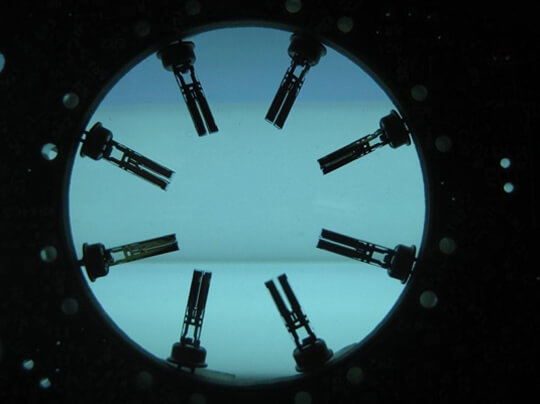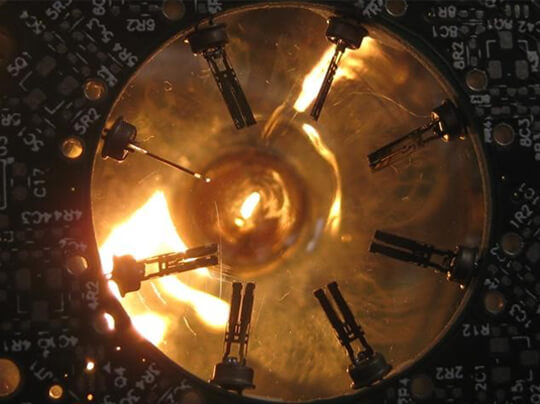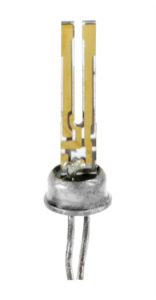Tuning Fork Sensors
The Tuning Fork Sensors are based on the principle of dual tuning forks, which vibrate at low frequencies. The scientific developments include the deposition of polymer, monolayer and antibody coatings, which are applied to the active surface of the sensors.
The Tuning Fork Sensors are designed for operation in gas, vapor and liquid phases. As the Tuning Fork Sensors are progressively covered by a liquid, a shift in frequency occurs, which activates the relay output. The Tuning Fork Sensor is often used in conditions where there may be frequent composition changes in the liquid.
The Tuning Fork Sensors have the capacity to detect and identify traces of materials in gas, vapor and liquid phases, even at very low concentrations. The sensors can be operated in various temperature ranges (from -10°C to +60°C) and at a humidity range of 5% to 95% RH without condensation.


Scientific Principle of Operation
The Tuning Fork Sensors are based on the vibration theory where molecules adsorbed on the surface of selective chemical coatings create changes in the mass weight of the Tuning Fork Sensors. This process affects their resonating frequency and provides a unique digital signature or fingerprint for each target substance. The changes are accurately measured within seconds through a combination of Tuning Fork Sensors and powerful pattern recognition algorithms.

Typical Response Curves
The dynamic range of resonating frequency of Tuning Fork Sensors is typically between several to a few hundred MHz’s. In each sample analysis, the frequency responses of all sensors are measured over pre-determined time intervals.
The sample identification process occurs when pattern recognition algorithms process the received digital signature and match it with an existing database of substances stored in the instrument. The Tuning Fork Sensors responses create a digital signature characterizing the Tuning Fork Sensor Matrix reaction to a specific material inserted for analysis.
The Sensor Matrix response for a given sample is systematically measured and consistent with the likely ranges of target molecules and typical interferents previously inserted into the database.
The dynamic range of resonating frequency of Tuning Fork Sensors is typically between several to a few hundred MHz’s. In each sample analysis, the frequency responses of all sensors are measured over pre-determined time intervals.
The sample identification process occurs when pattern recognition algorithms process the received digital signature and match it with an existing database of substances stored in the instrument. The Tuning Fork Sensors responses create a digital signature characterizing the Tuning Fork Sensor Matrix reaction to a specific material inserted for analysis.
The Sensor Matrix response for a given sample is systematically measured and consistent with the likely ranges of target molecules and typical interferents previously inserted into the database.
The distribution of the Sensor Matrix responses to analyzed samples can be plotted as histograms. This technological concept enables a fast adaptation and flexibility in “learning” to detect and identify new target substances while maintaining low false alarm rates.
The dynamic range of resonating frequency of Tuning Fork Sensors is typically between several to a few hundred MHz's. In each sample analysis, the frequency responses of all sensors are measured over pre-determined time intervals.
The sample identification process occurs when pattern recognition algorithms process the received digital signature and match it with an existing database of substances stored in the instrument. The Tuning Fork Sensors responses create a digital signature characterizing the Tuning Fork Sensor Matrix reaction to a specific material inserted for analysis.
The Sensor Matrix response for a given sample is systematically measured and consistent with the likely ranges of target molecules and typical interferents previously inserted into the database.
The distribution of the Sensor Matrix responses to analyzed samples can be plotted as histograms. This technological concept enables a fast adaptation and flexibility in “learning” to detect and identify new target substances while maintaining low false alarm rates.



